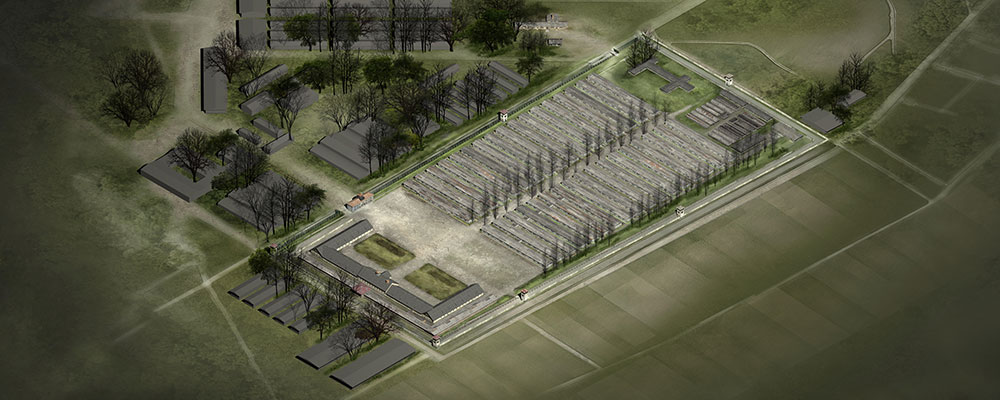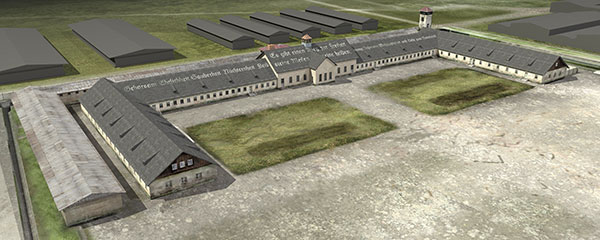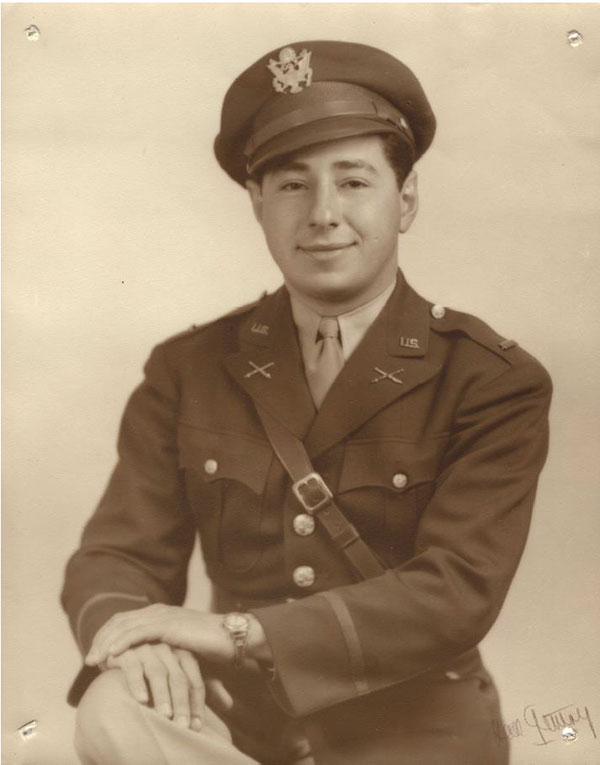Heroes of the Holocaust
By: Nicole Lundberg
Bringing the stories of the men who liberated concentration camps to life for a new generation.

They prepared for death and destruction, but nothing could have prepared them for the horrors they witnessed.
In April 1945, American soldiers witnessed unspeakable atrocities – adults who scarcely weighed 70 pounds, piles of dead bodies and technologies designed for mass murder - as they liberated prisoners from the Nazi concentration camps.
"The soldiers who liberated these camps were ordinary men," said Aliza Wong, associate professor of history and associate dean of the Texas Tech Honors College. "Many of these men came from rural areas. They had never travelled; some had never even been to a big city."
Decades later, an interdisciplinary team of Texas Tech researchers is sharing the stories of a group of these soldiers who came from Texas, known as the Texas Liberators, with a new generation.
"We know the veterans of World War II are aging, and there are fewer and fewer left with us," Wong said. "We want to record their story because so many of them came home and weren't able to speak about this experience - partly because they were so traumatized and partly because they wanted to protect their families."
Telling the Story

According to Peter Berkowitz, former chairman of the Texas Holocaust and Genocide Commission (THGC), the Holocaust, the mass genocide committed by the Nazi regime, was not included among the topics covered by the College Board's Advance Placement (AP) U.S. history curriculum until 2016. Because many school curriculums are designed to prepare students for the AP exam, thousands of high school students never learned about the Holocaust.
After successfully petitioning the College Board to add the Holocaust to the AP exam, Berkowitz said he approached Wong to develop resources for students and teachers.
Originally, Berkowitz wanted to create a digital textbook. However, inspired by her students and her high-school-age son, Wong suggested the commission create an interactive app instead.
"Using gaming as a portal to further an educational experience is a new concept in the classroom," Wong said. "If you ask a classroom of high school students how many have played 'Call of Duty,' most hands will go up. That is a mode of entry, a mode of engagement that a lot of students are comfortable with and excited about."
Wong and a team with representatives from five different departments are creating an app to guide students through Dachau, a German concentration camp that held approximately 33,000 prisoners, through the eyes of a Texas Liberator.
Entering the Camp

Shakil Shimul, a graduate student in the College of Architecture, has carefully considered every detail of the buildings at Dachau. Using historic images of the camp, current pictures from Google Earth and blueprints, Shimul worked with Jiawei Gong, an assistant professor in the School of Art, to create accurately scaled 3D renderings of the camp.
As they created the 3D environment, the researchers were careful to depict the camp as it appeared in 1945 when the Texas Liberators arrived.
"A lot of the buildings have been restored, so we had to get back to what they looked like in 1945," Shimul said. "One of the biggest challenges was using the limited information we had to make the rendering accurate."
Their commitment to accurate detail went all the way to the textures on the buildings. Team members used multiple software programs to apply the colorings and textures from actual photos of the camp to the buildings in the app.

Students will visit key buildings as they play the role of a Texas Liberator and complete missions, which will require them to move throughout the camp. To complete these missions, they will visit important structures, including the entry gate and the barracks, and view artifacts that the liberators encountered, Wong said.
Students will also interact with the prisoners and the American soldiers in the camp, she said. When students ask a soldier a question, they will watch a video clip of a Texas Liberator describing what he experienced when he arrived at the camp. These oral histories come from 19 interviews filmed by Baylor University in 2012 through a project that was also funded by the THGC.
Chad Campbell, an undergraduate Honors College student and history major who worked on the project with Wong, said the videos bring the soldiers' stories to life.
"Watching the testimonies, you can see them staring off into the distance and breaking down emotionally as the memories start to come back to them," Campbell said. "They always go back to the smell of the camps and seeing these people whose bodies were completely falling apart."
The app offers an engaging, emotional learning experience and adheres to principles of good historical research, Wong said. In addition to paying meticulous attention to detail to accurately depict the camps and using primary sources, she wanted students to understand the Holocaust in its historical context.
"The moment when we enter the camps, the war has already been going on for five years and fascism has existed for decades, so students need that context," Wong said. "As a history teacher, you have to unpack the mythology about the war before you can teach it accurately."
To provide students with context for the stories and histories they will encounter in the interactive experience, Wong solicited the help of Robert Peaslee, an associate professor and the chair of the Department of Journalism & Electronic Media. Peaslee and Ian Love, a master's student in the College of Media & Communication, created a five-minute video that students will watch when they launch the app.
Beyond the App
Through the app, the Texas Liberators' stories will reach high school students across the United States and Canada. All Texas high schools, public and private, will receive access to the app in the fall of 2017. Parents who homeschool their children will also have access to the app, Wong said.
A website with resources for teachers and students will accompany the app. In addition, every Texas high school will receive a display book containing stories of the Texas Liberators along with a listing of known Texas Veteran Liberators, courtesy of the Friends of the Texas Holocaust and Genocide Commission.
The Museum of Texas Tech University will also play a role in sharing the Texas Liberators' stories through an exhibit, which will run from August to December 2017.
Ultimately, the team members hope that these educational tools will enable students to have an emotional connection to the historical event of the Holocaust.
"It is our hope that the immersive experience will inspire empathy," Peaslee said. "If you can have sense of what it would have been like to arrive in one of these camps, it might make it easier to empathize with the people rather than seeing them as a number on a page."
Berkowitz said he hopes this emotional connection with history will inspire students to fight injustice in contemporary society.
"Teaching the Holocaust is important because genocide is still happening," Berkowitz said. "As human beings, we have a responsibility to stop it. We must chose right over wrong."
Discoveries
-
Address
Texas Tech University, 2500 Broadway, Box 41075 Lubbock, TX 79409 -
Phone
806.742.3905 -
Email
vpr.communications@ttu.edu
